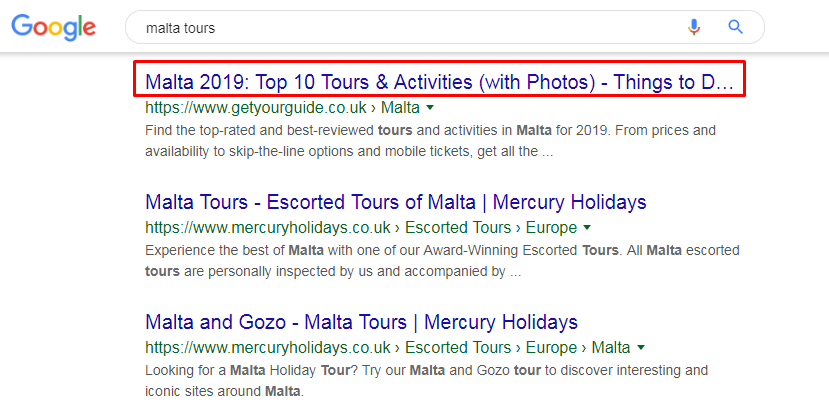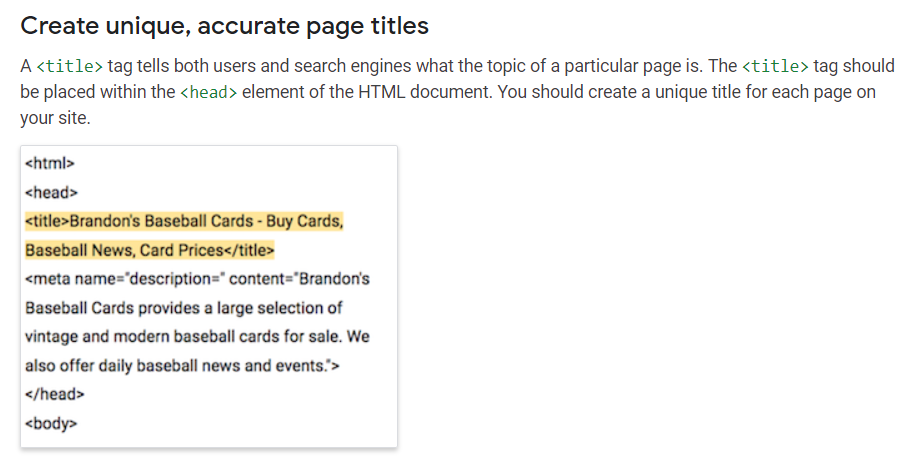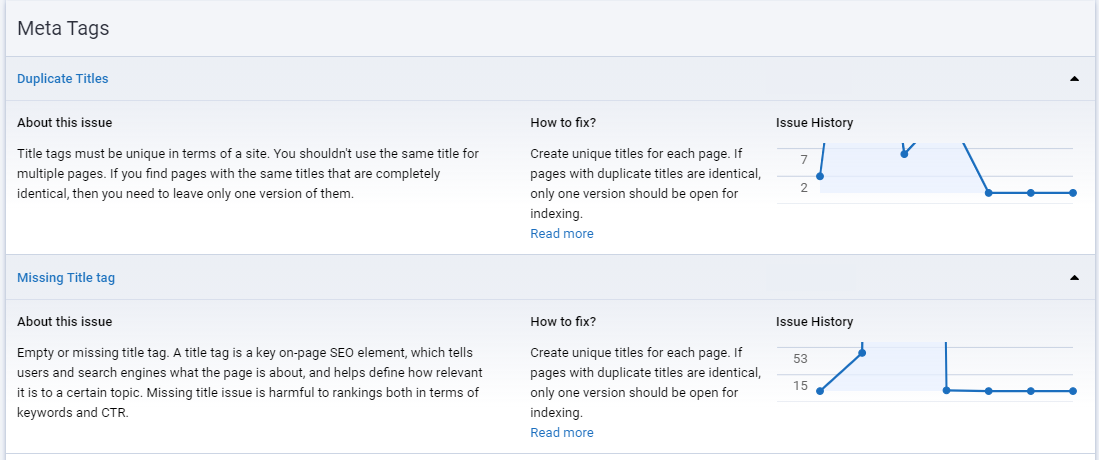If you know the basic principles of the heading formation, the recommended length of the Title and the possibilities for SEO, you will be able to avoid common mistakes and make website optimization more effective.
Meta tags are a part of the website page structure in the HTML format. The most famous of them are Title, Description, and Keywords.
Meta tags are a source of information for a search robot, and they also help to influence the snippet content which displays brief information about a website page that is presented in the search results.

Why is it important to fill in the Title tag
Filled in meta tags are not a mandatory condition when you launch a web project. At the same time, skilfully specified Title tags of website pages are an additional and important tool for internal optimization as well as a way to influence:
- organic search ranking and website visibility;
- the snippet and displayed heading in search results.
The role of the Title tag in SEO
The Title meta tag in SEO is a way to use more keywords in the subject area, expand the semantic core of the website and strengthen existing keywords. The content of the pages does not always contain text that reflects relevant queries of the target audience.
Using key queries in the meta tags you can launch the optimization of web pages where there are not enough semantic queries. For example, it can be a "Contacts" page or a product card with a small technical description.
Using targeted key queries in the body of an electronic document gives the right signal to the search engine robot. Thus, website pages may appear in search results in response to a similar query from a user.
The role of the Title tag in snippet formation
The page title is the top and most visible part of the snippet of any website that can be seen after the search engine processes the query. If the Title tag is not filled in, it will be generated automatically, for example, based on the H1 page title.
The Title meta tag helps not only to use more key queries to optimize a website but also to determine what the text in the title will be. This is a great opportunity to include relevant target keywords and other text in it, which will expand the target audience reach and will encourage users to switch to a web resource.
How to correctly compose a Title
There are certain principles that should be followed to create effective Title meta tags:
Relevance to the page content
The text of each heading should match the page content. Avoid common fuzzy keywords and give preference to the target ones.
Use of queries
As noted before, the Title meta tag plays an important role in web resource optimization expanding the range of keywords with high potential. When choosing keywords, you should be guided by the semantic core, that is, by the popular queries of the target audience of the selected niche. In Title, high-frequency and mid-frequency queries are appropriate. They should be placed at the beginning of the tag, in the part which is visible to a user.
Unique content
According to the technical recommendations of search engines , each Title tag of a website should be unique. You should pay attention to the meta headers of similar pages, for example, for cards of the same product presented in different sizes, and make them different from each other.

Informativity and readability
The page title should convey the essence of the page and be readable. Do not overfill the title with keywords; just one or two phrases in the visible part will be enough. To make Title more memorable, you can use the company or brand name.
The Title size
A part of the header can be shortened and hidden in search results. The final result is influenced by such factors as the selected search engine, device screen size, and browser type. This should be considered when filling in the tag. What are the minimum and the maximum length of the Title? How to effectively use its volume? Due to the fact that the size of the Title is a subject of controversy and discussion, we will consider this issue in more detail.
How long should Title be
The website titles in search results are displayed fully or partially. If the content of the Title tag exceeds the permissible character count, only the first part of the specified title will be visible to a user. Part of the text outside the limit can be truncated.
Minimum and maximum lengths of the Title
The minimum and maximum length of the Title depends on the search engine. The frequently used Title size on Google is 30-70 characters. The optimal length of the Title which allows you to effectively use key queries and additional text can be considered 70-80 characters.
The Title length and SEO plugins
Most content management systems allow you to meta tags in the <head> element using the admin panel. You can fill in meta tags in the page editing mode using special input fields. The screenshot shows the recommendations of the Risify Site Audit for the Title meta tag:

When entering the Title option, a CMS or SEO plugin can warn you about exceeding the conditional limit of characters in the meta tag. The same applies to SEO services which often recommend reducing the size of the Title only focusing on its visible part.
However, you don't always need to adhere to these restrictions. The content in the "tail" of the meta title can be hidden in the search results and be taken into account by the search system when generating responses to a user's query.
Conclusion
The Title meta tag is an important tool for website optimization and a way to determine the content of the title displayed to a user in search results.
The recommended number of characters for the meta title is 70-80 characters. A competent approach to using the acceptable number of characters will help to expand SEO capabilities and increase targeted organic traffic.
